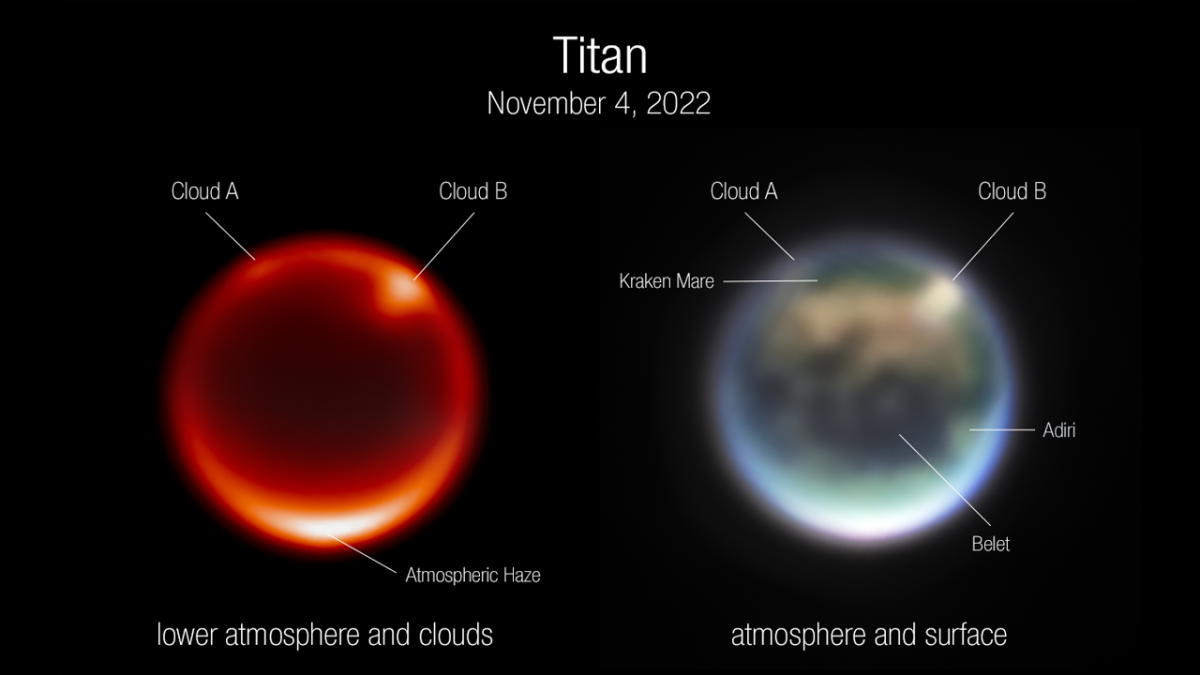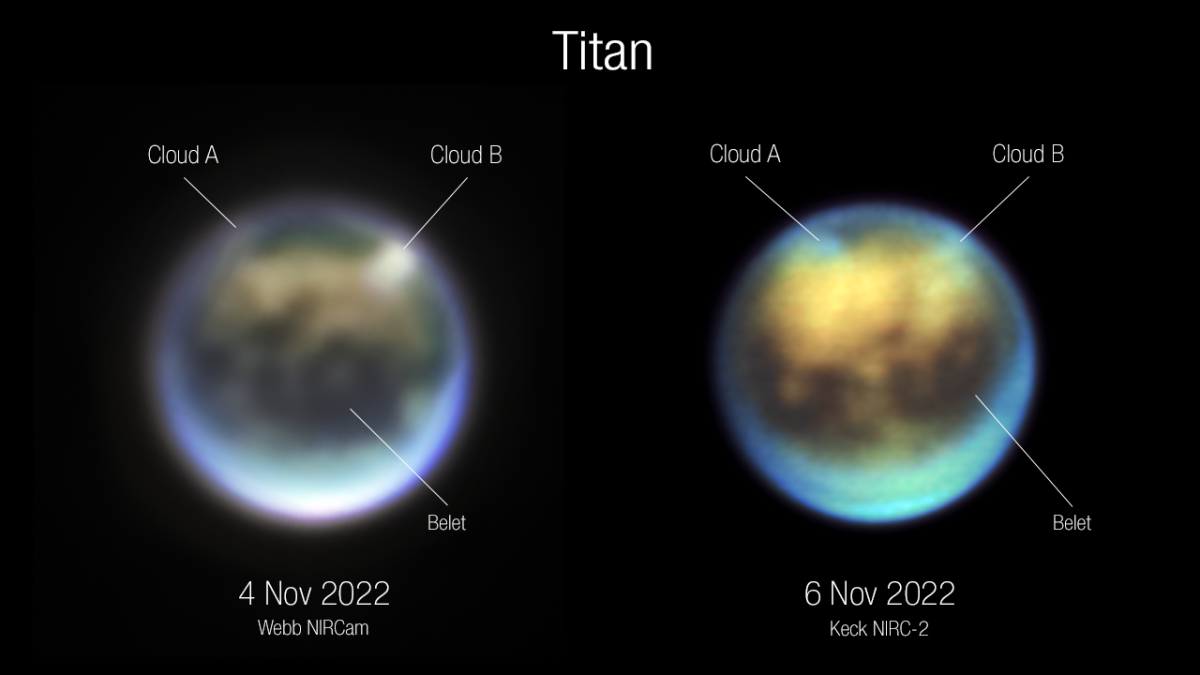The James Webb Space Telescope could see two clouds on Saturn’s moon Titan, one of which was located over the Kraken Mare. Ground-based telescopes have confirmed their existence. Now scientists hope to find out their exact chemical composition.

James Webb watches Titan
The James Webb Space Telescope, which began its observations this year, studies not only objects outside the Solar System. On November 4, scientists sent it to Saturn’s moon Titan, the largest in the solar system.
Titan is the only moon of the Solar System with a powerful atmosphere and hydrosphere. At low temperatures, they are formed by hydrocarbons — matters that make up natural gas deposits on Earth.
James Webb saw the moon’s disk in infrared rays. And on it there are areas with different albedo, that is, reflectivity. Two of them turned out to be clouds consisting of small droplets of hydrocarbons hanging at a certain height.
One of them was located above the Kraken Mare — a giant reservoir with an area of about 400 thousand km2, which is filled with liquid hydrocarbons. It is quite possible that it was formed from its vapors.
Subsequent cloud research
In order to test their observations, scientists used a telescope at the Keck Observatory in Hawaii. Despite the fact that the difference between the two observations was two days, it also saw two clouds in approximately the same places.

However, scientists are still not sure whether these are really the same clouds or two others that formed in their place. The atmosphere of Titan, according to current ideas, should be quite stormy. Yes, and in the Northern Hemisphere of Titan, where they were seen in the middle of summer. So, the winds in it should be tangible.
In addition, scientists have not yet completed processing data from the space telescope. After all, it observed Titan not only with its main camera NIRCam, but also with the help of a near-infrared spectrograph NIRSpec, which allows it to accurately find out their chemical composition.
In May 2023, James Webb will return to Titan research. This time it will observe the moon with its MIRI mid-infrared instrument. These studies will help to better plan the next missions in the Saturn system.
According to www.space.com
Follow us on Twitter to get the most interesting space news in time
https://twitter.com/ust_magazine

